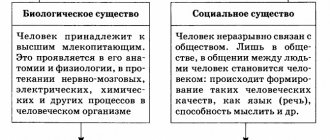A person is able to carry out any activity in various modes. And one of them, as we know, is mental states.
A mental state is a mode of human life that is distinguished by special energy characteristics at the physiological level, and a complex of psychological filters at the psychological level. These filters, in fact, provide a person’s subjective perception of the reality around him.
Together with personality traits and mental processes, mental states represent the main classes of mental phenomena studied by psychology. Mental states influence how mental processes proceed, and, repeating regularly and becoming more stable, they are able to become part of the personality structure, playing the role of its specific properties.
And if this topic seems interesting to you and you want to develop even more in it, we recommend our course “Mental Self-Regulation”, where you will learn real practical techniques for self-motivation, stress management and social adaptation in order to always control your emotional and mental state. Find out more about the course
What types of mental states are there?
All kinds of mental states are closely interconnected. And this relationship is so strong that it is very, very difficult to separate and isolate individual mental states. For example, the state of relaxation is associated with states of pleasure, sleep, fatigue, etc.
However, there are certain systems for categorizing mental states. Most often, states of intellect, states of consciousness and states of personality are distinguished. Of course, there are other classifications - they consider hypnotic, crisis and other types of states. At the same time, a lot of criteria are used to categorize conditions.
Mental health is an important part of life
Unfortunately, we are still faced with a phenomenon where people are embarrassed to seek help from neuropsychiatric hospitals. And sometimes this happens: a person does not know that he needs to go to a psychiatrist, and not to a therapist. These are patients who have such problems for the first time, they are not familiar with this condition and find it difficult to determine what their problems are. They try to overcome them on their own and delay a visit to a specialist, the only one who can provide them with effective help.
Modern medicine has excellent drugs that are not addictive. They often help restore mental health and get rid of mental illness.
Mental disorders require more than just medications. For full treatment, psychotherapy is necessary. Only active complex therapy can save a person from a mental disorder.
Maintain mental health
It is difficult to give any specific advice for maintaining mental health; basically, they coincide with the general principles of maintaining health. Much depends on a person’s lifestyle and habits. The body's defenses and immune forces should be strengthened in every possible way, where one of the fundamental principles is early diagnosis.
The subtle human psyche must be protected, and from the first days of life.
Mental disorders and diseases. Depressive disorders In all countries of the modern world, the problem of human mental health is important and relevant.
Criteria for the categorization of mental states
In most cases, the following group of criteria for categorizing mental states is distinguished:
- Source of formation:
- Conditions that are determined by the situation (reaction to punishment, etc.)
- Personally determined states (sharp emotion, etc.)
- Degree of external expression:
- Weakly expressed, superficial states (mild sadness, etc.)
- Strong, deep states (passionate love, etc.)
- Emotional coloring:
- Negative states (despondency, etc.)
- Positive states (inspiration, etc.)
- Neutral states (indifference, etc.)
- Duration:
- Long-term conditions that can last for years (depression, etc.)
- Short-term states that last a few seconds (anger, etc.)
- Conditions of medium duration (fear, etc.)
- Level of awareness:
- Conscious states (mobilization of forces, etc.)
- Unconscious states (sleep, etc.)
- Manifestation Level:
- Psychological states (enthusiasm, etc.)
- Physiological conditions (hunger, etc.)
- Psychophysiological conditions
Guided by these criteria, it is possible to present a comprehensive description of almost any mental state.
It is also important to mention that simultaneously with mental states there are also so-called “mass-type” states - mental states characteristic of specific communities: societies, nations, groups of people. Basically, such conditions are public sentiments and public opinions.
Now it’s worth talking about the basic mental states of a person and their properties.
Diagnosis of mental disorder
A physical examination and possibly laboratory tests if your doctor thinks that a medical condition may be causing your symptoms. Pathopsychological diagnostics will give an answer to your type of thinking and will be able to help the doctor in a more nuanced assessment of your psychological state, and will tell you about the individual characteristics of the formation and functioning of higher nervous activity.
There are many components to a person’s mental health. The doctor, through a specially structured conversation and survey, reveals the characteristics of yours. This is necessary in order to take into account all the nuances when prescribing therapy. The clinic’s specialists identify and take into account every detail and select the necessary treatment so that it becomes as effective for you as possible and brings a minimum of inconvenience.
To diagnose a mental disorder, the doctor evaluates the quality of thought processes, the correctness of assessment and display of the surrounding world, the adequacy of neuropsychic reactions, the quality of assessment and display of one’s self. In addition, to fully assess the work of higher nervous activity, the doctor assesses intelligence, memory ability, amount of knowledge, the quality of social contacts, adaptive abilities, reaction to external stimuli and much more.
When one of the abilities of higher nervous activity decreases and, as a result, the quality of life of the person himself begins to suffer or the people around him suffer, we can talk about the presence of a mental disorder.
How to treat a mental disorder?
It is easier to maintain mental health and prevent possible mental disorders by maintaining it and avoiding damaging factors. However, this is not always possible and problems may arise that it is advisable to solve as quickly as possible. To do this, if any problems arise, you should immediately contact a good psychiatrist. The sooner you begin to restore your mental health, the faster and more effective the therapy will be.
Treatment of a mental disorder depends on the true cause of its formation and the area of the brain that has undergone undesirable changes. You and your doctor will create a personalized treatment plan. The specialist will select methods and forms of therapy to obtain maximum effect.
In some cases, more intensive therapy may be required in the form of intravenous infusions in a day or 24-hour hospital. You may need to be hospitalized. This may be due to the need to quickly localize and stabilize your mental state. In our clinic you will receive qualified consultation, intensive therapy, group and individual psychotherapeutic sessions.
Basic mental states. Properties of mental states
The most common and typical mental states inherent in most people in their daily and professional life are the following states:
Optimal working condition – ensures maximum performance of activities taking place at an average pace and intensity.
Properties of the state: increased concentration, active thinking, sharpened memory and the presence of a goal.
A state of intense work activity – occurs when working in extreme conditions.
Properties of the condition: mental stress caused by the presence of a goal of increased importance or increased requirements, strong motivation to achieve the desired result, increased activity of the entire nervous system.
The state of professional interest plays a vital role in job performance.
Properties of the state: conscious significance of professional activity, desire and desire to learn as much information as possible about the work being performed, concentration of attention on objects that are associated with the activity. In a number of cases, there is an activation of creative potential, a sharpening of perception, an increased ability to repeat what has already been learned, and an increased power of imagination.
Monotonia is a condition that develops under long-term and regularly repeated loads of medium or low intensity, as well as under repeated monotonous information.
Properties of the state: indifference, decreased concentration, boredom, impaired perception of received information.
Fatigue is a state of temporary decrease in performance that occurs during prolonged and high loads. Associated with exhaustion of the body.
Properties of the condition: decreased motivation to work, dysfunction of memory and attention, increased processes of central nervous system inhibition.
Stress is a state of prolonged and increased tension, which is associated with a person’s inability to adapt to the demands of the environment. Here, environmental factors play a major role, exceeding the human body’s ability to adapt.
Properties of the condition: mental stress, feelings of anxiety, ill-being, often apathy and indifference. In addition, the adrenaline reserves that the body needs are depleted.
A state of relaxation is a state of recuperation, relaxation and calm that occurs during autogenic training or, for example, prayers or reading mantras, etc. The main reason for this condition is the cessation of any strenuous activity by a person at all.
Properties of the state: a feeling of warmth spreading throughout the body, a feeling of peace and relaxation at the physiological level.
The sleep state is a special mental state characterized by the disconnection of a person’s consciousness from external reality. It is interesting that the sleep state has two distinct phases that constantly alternate - slow-wave sleep and fast-moving sleep. Both of them can often be considered as independent mental states. And the process of sleep itself is associated with the need to systematize the flows of information that were received during wakefulness, as well as the body’s need to restore its resources.
Properties of the state: loss of consciousness, immobility, temporary activity of various parts of the nervous system.
The state of wakefulness is the opposite of the state of sleep. In a calm form, it can manifest itself in activities such as, for example, watching a movie, reading a book, listening to music. In a more active form it manifests itself in physical exercises, work, walks, etc.
Properties of the state: average activity of the nervous system, absence of pronounced emotions (in a calm state) or, conversely, violent emotions (in an active state).
Let us repeat that the above mental states are typical for most people. Any relationship between these conditions, as well as the dynamics of the process of their development, are of utmost importance, both in a person’s ordinary life and in his professional activities.
Based on this, mental states can be safely called one of the subjects of study in various areas of psychological science, such as general psychology, developmental psychology, personality psychology, psychology of motivation or occupational psychology.
Throughout time, people have tried to understand the essence of mental states, and these attempts do not stop even in our time. The reason for this is, perhaps, that a person and the characteristics of his personality are a great mystery both for ordinary people and for scientific minds. And one cannot help but say that today enormous progress has been made in the study of human personality, which boldly continues its path forward. But it is likely that this riddle will never be completely solved, because nature in any of its forms is truly incomprehensible.
We also recommend reading:
- Storytelling
- Ability to understand emotional state
- Techniques for dealing with negative moods
- How to understand how a person feels
- The need-information theory of P. V. Simonov
- Bipolar disorder: definition, causes, episodes, treatment
- How to learn to change your condition
- Mental processes: types and brief description
- Methods of mental self-regulation: save yourself
- Flow model
- Feelings, emotions and sensations: the first step to profiling
Key words:1Self-knowledge
Difference between psychology and psychiatry
The job descriptions of psychologists and psychiatrists are often confused, but the main difference lies in the authority of medical professionals.
Psychiatrists are doctors who use their medical education and clinical experience to treat mental, emotional and behavioral disorders through medication and psychotherapy.
Psychology, a discipline rooted in philosophy, concerns the educational process and the associated philosophical approach to human life and behavior. Psychologists do not have the right to diagnose and treat mental disorders independently, without orders from a psychiatrist. They can carry out correction of upbringing in childhood and adulthood. In fact, they must work under the guidance of a psychiatrist. Prescribing treatment for them is prohibited.
Clinical training and education also differ between psychologists and psychiatrists. Psychology students study cognition and human behavior, while psychiatry students study biology and medicine.
What are the types of mental disorders? There are many different types of mental disorders. They are listed in ICD-10
F00-F99 Mental and behavioral disorders
- F00-F09 Organic mental disorders
- F10-F19 Substance use disorders
- F20-F29 Schizophrenia, schizotypal and delusional disorders
- F30-F39 Mood disorders (affective)
- F40-F48 Neurotic, stress-related and somatoform
- F50-F59 Behavioral disorders
- F60-F69 Personality disorders
- F70-F79 Mental retardation
- F80-F89 Disorders of psychological development
- F90-F98 Emotional disorders
- F99 Unspecified mental disorders
These sections include all pathological conditions of higher nervous activity. Such as:
- Anxiety disorders including panic disorder, obsessive-compulsive disorder and phobias.
- Depression, bipolar disorder and other mood disorders.
- Eating disorders.
- Post-traumatic stress disorder.
- Psychotic disorders.
- Other painful conditions.








